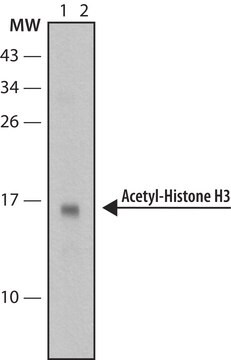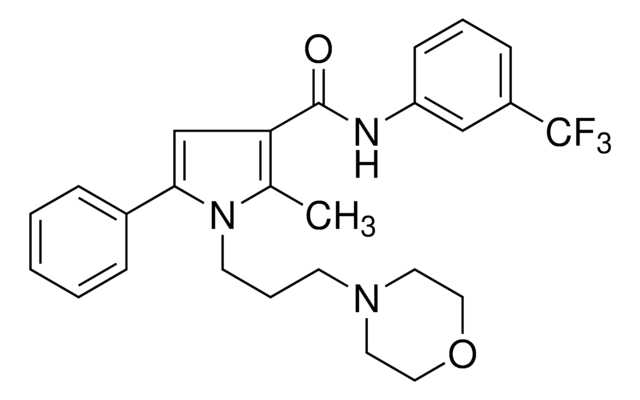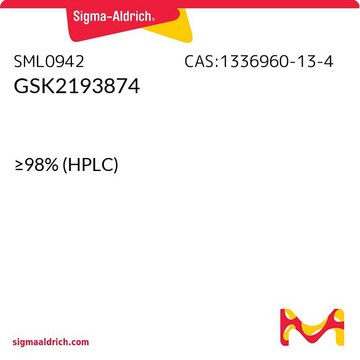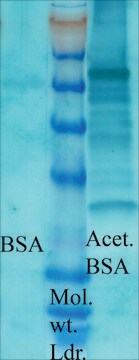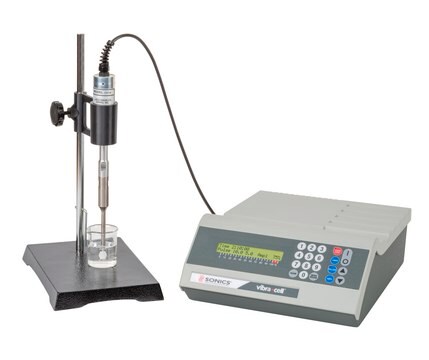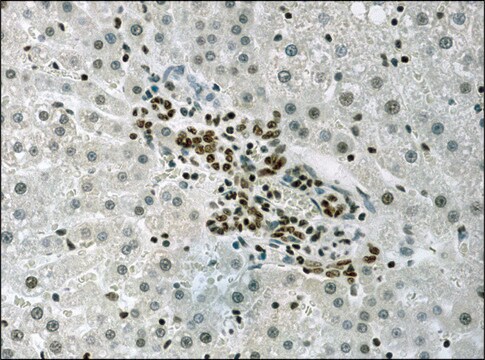ABE18
Anti-acetyl Histone H3 (Lys9) Antibody
from rabbit, purified by affinity chromatography
Sinónimos:
H3 histone family, member T, histone 3, H3, histone cluster 3, H3, H3K4ac
About This Item
Productos recomendados
biological source
rabbit
Quality Level
antibody form
affinity isolated antibody
antibody product type
primary antibodies
clone
polyclonal
purified by
affinity chromatography
species reactivity
chicken, human, mouse
technique(s)
ChIP: suitable (ChIP-seq)
dot blot: suitable
multiplexing: suitable
western blot: suitable
NCBI accession no.
UniProt accession no.
shipped in
wet ice
target post-translational modification
acetylation (Lys9)
Gene Information
human ... HIST1H3F(8968)
General description
Specificity
Immunogen
Application
A representative lot of this antibody immunoprecipitated chromatin from Histone H3 acetylated on Lys9.
ChIP-Sequencing:
Chromatin immunoprecipitation was performed using the Magna ChIP HiSens kit (cat# 17-10460), 2 μg of a representative lot of anti-acetyl-Histone H3 (Lys9) antibody (ABE18), 20μL Protein A/G beads, and 1e6 crosslinked HeLa cell chromatin followed by DNA purification using magnetic beads. Libraries were prepared from Input and ChIP DNA samples using standard protocols with Illumina barcoded adapters, and analyzed on Illumina HiSeq instrument. An excess of thirteen million reads from FastQ files were mapped using Bowtie(http://bowtie-bio.sourceforge.net/manual.shtml) following TagDust (http://genome.gsc.riken.jp/osc/english/dataresource/) tag removal. Peaks were identified using MACS (http://luelab.dfci.harvard.edu/MACS/), with peaks and reads visualized as a custom track in UCSC Genome Browser (http://genome.ucsc.edu) from BigWig and BED files.
Dot Blot Analysis:
A representative lot pf this antibody detected Histone H3 in modified and non modified peptides of acetylated and non-acetylated Histone H3 Lys9.
Luminex Analysis:
A representative lot of this antibody specifically recognized Histone H3 acetylated on Lys9 by Luminex assay.
Epigenetics & Nuclear Function
Histones
Quality
Western Blot Analysis: 0.05 µg/mL of this antibody detected Histone H3 on 10 µg of sodium butyrate untreated and treated HeLa acid extract.
Target description
Physical form
Storage and Stability
Analysis Note
Sodium butyrate untreated and treated HeLa acid extract
Other Notes
Disclaimer
¿No encuentra el producto adecuado?
Pruebe nuestro Herramienta de selección de productos.
Storage Class
12 - Non Combustible Liquids
wgk_germany
WGK 1
flash_point_f
Not applicable
flash_point_c
Not applicable
Certificados de análisis (COA)
Busque Certificados de análisis (COA) introduciendo el número de lote del producto. Los números de lote se encuentran en la etiqueta del producto después de las palabras «Lot» o «Batch»
¿Ya tiene este producto?
Encuentre la documentación para los productos que ha comprado recientemente en la Biblioteca de documentos.
Nuestro equipo de científicos tiene experiencia en todas las áreas de investigación: Ciencias de la vida, Ciencia de los materiales, Síntesis química, Cromatografía, Analítica y muchas otras.
Póngase en contacto con el Servicio técnico

